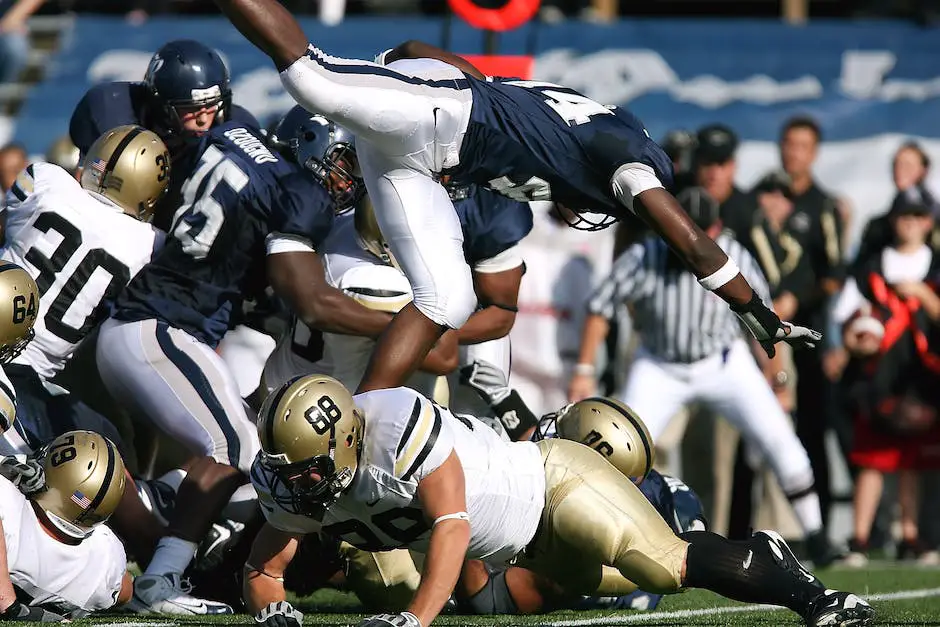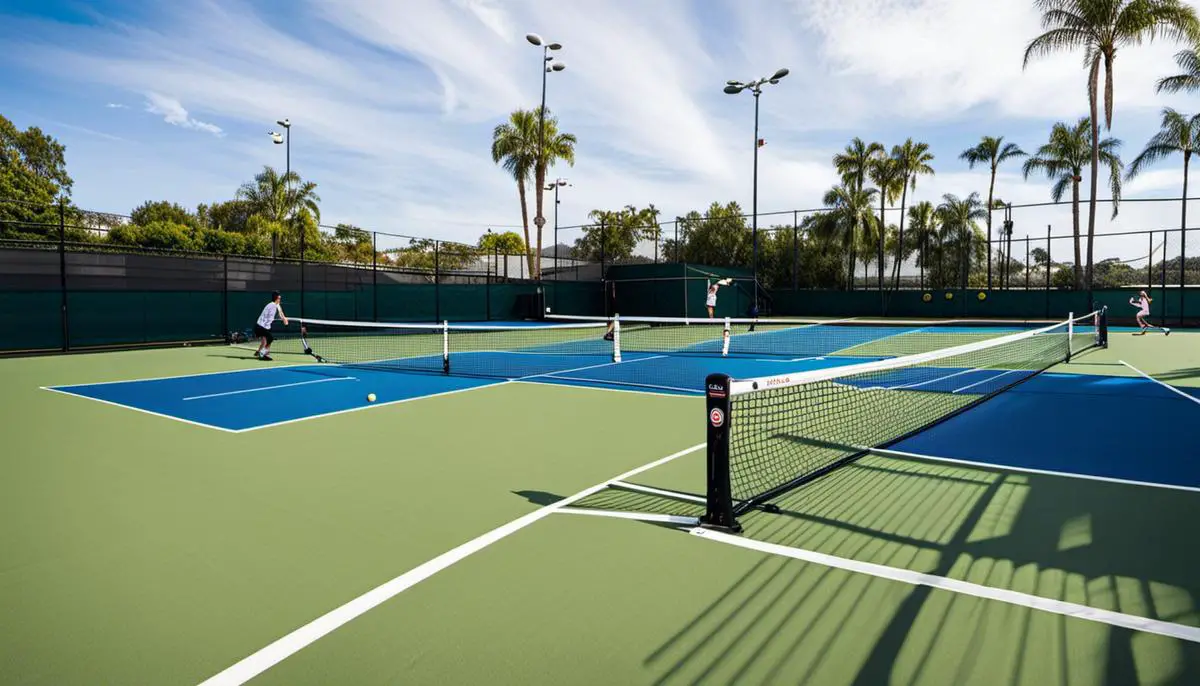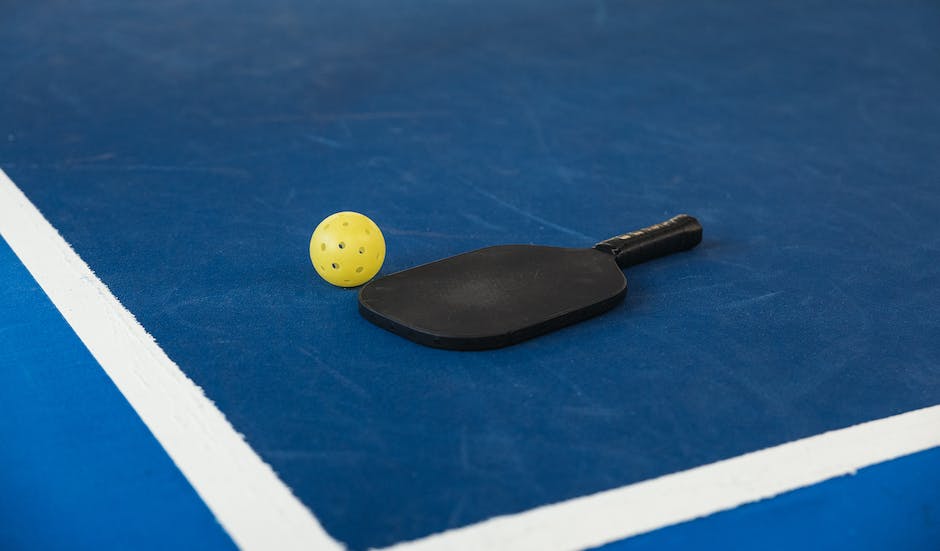The exciting sport of Pickleball has quickly become an American favorite, demanding agility, strategy, and a deep understanding of its distinctive rules. Whether you’re a beginner exploring this wonderful game or an experienced enthusiast treading the path to becoming a referee, it’s crucial to master the underpinnings that form the essence of the game. This journey of learning encompasses a thorough understanding of the game, terminologies and the role of a referee, as well as familiarity with standard game equipment and player objectives. Wading deeper into the pool of knowledge, one unravels the duties and impact of a referee, sowing seeds of responsibility, robust decision-making, and game flow management.
Basic Understanding of the Game
Understanding the Game
Pickleball is a racket sport that combines elements of badminton, table tennis, and tennis. You would need a Pickleball paddle, which is smaller than a tennis racket but larger than a ping pong paddle, and a Pickleball ball, which is similar to a wiffle ball, to play this game. This game can be played either as singles or doubles, like tennis. The objective of the players is to hit the ball back and forth, trying to make it as difficult as possible for the opponent to return the ball.
Terminologies
Some commonly used terms in Pickleball include:
- Serving: This is the action to start a point. The server hits the ball into the opponent’s court.
- Volley: Hitting the ball in the air, without letting it bounce first.
- Kitchen: Another term for the non-volley zone, which is a seven-foot area on both sides of the net.
- Double Bounce Rule: After serving, the receiving team must let the ball bounce once before returning, and then the serving team must also let it bounce before returning.
Roles of the Players and Referee
The players are responsible for serving the ball, volleying, and adhering to the double bounce rule, trying to score points by making the ball land in the opponent’s court, or by forcing the opponent to commit a fault.
The referee, on the other hand, is responsible for ensuring that all players follow the rules of the game. They judge whether serves and hits are legal, check if scoring is correct, call out fouls, and declare the result of each game.
Basic Rules for Referees
Referees must understand the rules of the game thoroughly. They should be able to recognize faults and scoring methods. A fault is committed when the ball touches any part of the non-volley zone on a serve, the ball is hit out of bounds, the ball does not clear the net, the ball is volleyed before a double bounce, etc.
Referees also have the responsibility to manage the game, which includes beginning and ending the game, controlling the pace, ensuring fair play, and making calls on service faults, double bounces, and line faults. They also determine who serves first and which side of the court players should be on at the beginning of the game.
Remember as a referee, your role is crucial in ensuring the game is played fairly and according to the rules. Therefore, an in-depth understanding of the game, its rules, and your responsibilities, is essential.

Understanding the Referee Position
Understanding the Referee Role in Pickleball
A pickleball referee is an integral role in maintaining an unbiased and equal playing field. The primary responsibility involves officiating the game, making sure that it is conducted under the rules of Pickleball. The referee observes the contestants’ actions and the ball’s movement, making decisions on game proceedings based on these observations. It is vital that a referee possesses a thorough understanding of the rules and regulations to ensure fair play and competition.
Enforcing Rules and Regulations
One of the major tasks of a pickleball referee is enforcing rules during game play. This includes monitoring for any violations or fouls committed by the players, with penalties given accordingly. The referee ensures that both player actions and ball movement are within the set rules. The referee is also in charge of coin tosses, initiating play, keeping track of the score, calling out the score before every serve, and calling “side out” after the server’s side has lost a rally.
Dispute Resolution
Dispute resolution is another key responsibility of a pickleball referee. In any game, there can be disagreements on plays, calls, or scores between players. It is up to the referee to resolve these disputes in a fair and justified manner. The referee is looked upon to provide clarity on the rules and apply them to the scenarios at hand.
Impact of the Referee on Game Flow
A pickleball referee is integral to the overall flow and momentum of the game. The referee controls the pace by keeping the game moving, limiting unnecessary delays, and ensuring each serve occurs within the correct timeframe. In addition, the referee’s duty is to maintain the spirit of the game, emphasizing respect, sportsmanship, and fair play among athletes. The interpretation and application of rules by the referee can vastly shape the competitive dynamic of the game. Therefore, a deep understanding and knowledge of all the game’s rules, paired with excellent judgment skills, are a must for this position.

Study of Official Pickleball Rules
Understanding the Official Rules of Pickleball
Pickleball is a popular American paddleball sport that combines elements of tennis, badminton, and table tennis. To play this game, you must understand and follow the USA Pickleball Association’s official rules. There are different sets of regulations, ranging from serving rules to scoring rules and beyond.
Serving Rules in Pickleball
When serving, it’s crucial to understand that you must serve underhand with the paddle below the waist – the server must keep both feet behind the baseline. Serves should always be made diagonally, landing within the opposite service court. The server continues to serve as long as they continue winning points. The first serve in a new game is only allowed one attempt, unlike two for all other scenarios.
Double Bounce Rules in Pickleball
The double bounce rule, also known as the two-bounce rule, states that when the ball is served, the receiving team must let it bounce once before returning, and then the serving team must also let it bounce once before returning. After these two bounces have occurred, players can either volley the ball in the air without letting it bounce or play it off a bounce.
Non-volley Zone Rules in Pickleball
The non-volley zone, also known as the kitchen, is the seven-foot zone on both sides of the net. No player is allowed to step into the non-volley zone and hit the ball before it bounces – doing so is a fault. Players can, however, step into or through the zone after the ball has bounced once.
Scoring Rules in Pickleball
In Pickleball, only the serving team can score points. The game is usually played up to 11 points, and the team needs to win by two points. If the serving team’s score is even, the player on the right side (even court) serves to the court diagonally opposite. Conversely, if the server has an odd score, the player on the left side (odd court) must serve.
Remembering these official Pickleball rules can significantly improve your understanding of the game, but consistent practice will embed the game’s principles in your habits. It’s always a good idea to refer back to the official USA Pickleball Association rulebook for a comprehensive understanding of the regulations.

Common Rule Violations and How to Handle Them
Rule Violation: Serving in Pickleball
In pickleball, all serves must be made underhand with the paddle below the waist, and the server must keep both feet behind the baseline until the ball is struck. The serve should be hit diagonally, landing in the opponent’s correct service court. Failure to abide by these serving rules is a common violation.
Handling this violation is simple. The referee should blow the whistle or verbally indicate a fault, stating specifically what rule was broken. The server then loses his serve.
Rule Violation: Double Bounce Rule
A common violation in pickleball is the double bounce rule, also called the “two bounce rule”. According to this rule, each team must let the ball bounce once on their side of the net before hitting it. Violating this rule is considered a fault.
To handle this violation, the referee should blow a whistle or declare a fault, point to the spot where the second bounce occurred, and explain what happened and why it’s a fault. The team that committed the fault loses the rally.
Rule Violation: Non-Volley Zone Faults
The non-volley zone, often referred to as the “kitchen”, is the area directly adjacent to the net and extends 7 feet on both sides. Players are not allowed to volley while standing in the non-volley zone.
When this rule is violated, the referee should blow a whistle or declare a fault. The referee should point to the non-volley zone and clarify the fault with the player. The point is then awarded to the opposing team.
Rule Violation: Line Calls
In pickleball, it can be common for disputes to arise over whether a shot was in or out. The rule is that the ball is considered in if any part of it contacts any part of the baseline or sideline. If a player improperly calls the ball out, it is a violation.
To handle this situation, the referee should make the decision based on their judgment. If it is a friendly match with no referees, the players should discuss and come to an agreement. If a common consensus cannot be reached, a replay is the best solution.
Remember, as a referee, it is vital to be assertive in decision-making and communicate clearly and accurately to enforce fair play.

Practical Training and Scenarios
Understanding the Basics of Pickleball Refereeing
To grasp the rules of refereeing a pickleball match, first familiarize yourself with the basic rules of the game. This includes understanding the scoring procedure, positioning of players, service rules, non-volley zone rules, faults and violations. As a referee, you must clearly comprehend these rules to ensure fair and standardized play.
Practical Training: Mock Matches
Mock matches are an excellent method for aspiring refs to get a handle on the game. As a referee in training, observe the flow of the game, note down player infractions, and make accurate calls. Practice being assertive in your decisions and maintain an impartial perspective.
Refereeing Practice Games
Another form of practical experience for referees in training comes from officiating practice games. Oversee the rules and regulations, keep track of scores, and call out faults. Use this as an opportunity to enhance your decision-making abilities and to get comfortable with managing conflicts or disagreements during a game.
Studying with Recorded Matches
Watching recorded professional pickleball matches can help you understand top-tier gameplay and referee decision making. Observe the pace of the game, how referees make their calls, and how they handle fouls and disputes. Try pretending to referee a recorded match, make your own calls and compare them with the actual decisions in the game.
Applying Rules in Different Scenarios
Create a series of hypothetical game scenarios and consider how the rules would apply in each situation. Examples could include what happens if a ball touches the non-volley zone line, what constitutes a service fault, how to handle player injuries, or what determines match completion. Evaluating these different situations in advance will bolster your confidence and efficiency as a referee.
Learning the Signals
Referees use official hand signals to indicate certain rulings. Spend time learning these signals, as you will need to use them when officiating a pickleball match. Physically practicing these signals will help you become more fluent in your use of them.
The key to mastering pickleball refereeing rules is immersive and consistent practice. With time and experience, you will become adept in anticipating game scenarios, making accurate calls, and officiating successfully.

Navigating through the comprehensive, albeit intricate, set of Pickleball rules can considerably enhance your enjoyment and appreciation of the game. Knowledge gained is not confined to theoretical aspects, it extends into the realm of practical application, where real game scenarios come into play. In these crucibles, one learns to identify and effectively tackle common rule violations, fostering a staunch understanding of fair play. The fusion of theoretical knowledge with practical training illuminates the path towards being an effective Pickleball referee, reinforcing the essence of the game. The essence, however, is not just in the rules, equipment, or roles but in the passion and spirit of sportsmanship that Pickleball epitomizes. Embarking on this voyage of understanding and application, one truly dives into the pulsating heart of the game that is Pickleball.